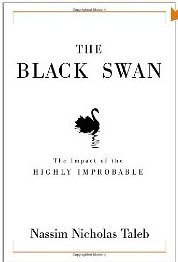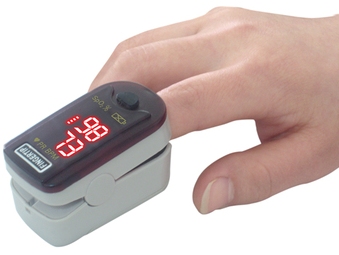May 27th, 2011 by Iltifat Husain, M.D. in News
No Comments »

 The Electrical and Computer Engineering in Medicine (ECEM) research group in collaboration with the Pediatric Anesthesia Research Team (PART) at the University of British Columbia have developed a mobile solution to measuring key vital signs — called the “Phone Oximeter”.
The Electrical and Computer Engineering in Medicine (ECEM) research group in collaboration with the Pediatric Anesthesia Research Team (PART) at the University of British Columbia have developed a mobile solution to measuring key vital signs — called the “Phone Oximeter”.
The Phone Oximeter uses a traditional FDA approved pulse oximetry sensor, but researchers have modified it to interface with a phone, in this case, your iPhone. Currently the setup is being interfaced with an iPhone for trial studies, but is compatible with Android, and other mobile operating systems.
What makes the Phone Oximeter special is its ability to capture SpO2 (blood oxygen saturation), heart rate, and respiratory rate — then dynamically comprehend the variables using the decision support software, giving medical staff or even laymen individuals key help in making decisions on medical care.
So how would a device like this be useful in the medical setting? Read more »
*This blog post was originally published at iMedicalApps*
April 18th, 2011 by Medgadget in Research
No Comments »

 A study published in journal Chest has shown that novel intra-sleep pulse oxymetry can be an effective modality in identifying cardiovascular disease risk in patients. In the study, a modified version of Weinmann‘s SOMNOcheck micro oximeter was used to observe pulse wave attenuation, heart rate acceleration, pulse propagation times, as well as respiration-related pulse oscillations and oxygen desaturation episodes. All the collected data was analyzed by an algorithm, and the prognostic results were checked against European Society of Hypertension/European Society of Cardiology (ESH/ESC) risk factor matrix.
A study published in journal Chest has shown that novel intra-sleep pulse oxymetry can be an effective modality in identifying cardiovascular disease risk in patients. In the study, a modified version of Weinmann‘s SOMNOcheck micro oximeter was used to observe pulse wave attenuation, heart rate acceleration, pulse propagation times, as well as respiration-related pulse oscillations and oxygen desaturation episodes. All the collected data was analyzed by an algorithm, and the prognostic results were checked against European Society of Hypertension/European Society of Cardiology (ESH/ESC) risk factor matrix.
Some details from the study abstract: Read more »
*This blog post was originally published at Medgadget*
February 20th, 2011 by LouiseHBatzPatientSafetyFoundation in Opinion, True Stories
No Comments »

This is a guest post by J. Paul Curry, M.D.
I was inspired when I lost my best friend 15 years ago to a common medical-error phenomenon: The lack of monitoring patients in the hospital.
Losing Mark altered my entire career in medicine and started me on a long journey of trying to understand how this particular problem happens. The journey has been eye-opening for me for many reasons, and probably most importantly by striving to learn and understand how the human brain can deceive itself into believing that thoughtful, rational, goal-directed tactics are always the solution to finding the answers to highly-complex enigmas.
 Actually, the blockbusting solutions that change the course of our culture — how we do things — are most often totally unpredictable and discovered by accident by disruptive innovators, such as Dr. Larry Lynn of the Sleep and Breathing Research Institute, willing to tinker on their own and against the grain of thousands of smart people who dismiss this kind of outlier work as fantasy. To get just how often this happens and why, I’d invite those unfamiliar with Nassim Nicholas Taleb’s work to read “The Black Swan : The Impact of the Highly Improbable” and other books of his. This is what we’re up against today.
Actually, the blockbusting solutions that change the course of our culture — how we do things — are most often totally unpredictable and discovered by accident by disruptive innovators, such as Dr. Larry Lynn of the Sleep and Breathing Research Institute, willing to tinker on their own and against the grain of thousands of smart people who dismiss this kind of outlier work as fantasy. To get just how often this happens and why, I’d invite those unfamiliar with Nassim Nicholas Taleb’s work to read “The Black Swan : The Impact of the Highly Improbable” and other books of his. This is what we’re up against today.
I was recently operated on, having a significant multi-level back surgery at one of the outstanding university spine programs in the country, supported by one of the elite anesthesia programs. I was told by the resident that I’d be going to the general care floor following my surgery, where I’d be checked on regularly. This was a given because I’m a fitness fanatic, but the resident wasn’t prepared for my followup questions. As I probed for more detail, it became apparent that no one in the organization had any inkling that nursing checks only occurring every four or eight hours on a patient fresh from surgery with patient-controlled narcotics was less than standard of care.
I told them I have mild sleep apnea and wanted pulse oximetry at minimum. I had to be upgraded to telemetry to get it. What’s more interesting is that there was so little understanding of this problem that they put me on pulse oximetry in a room where the only one who could watch it was me — the patient. Read more »
November 4th, 2010 by Iltifat Husain, M.D. in Better Health Network, Health Tips, News, Research
No Comments »


Imagine jogging, listening to music, and being able to keep track of your heart rate without needing a special watch or chest belt — common forms of attempting to monitor heart rates while jogging. Now, imagine not requiring any extra peripherals at all — just your iPhone and a special set of headphones that can monitor your heart rate.
Swiss technology-transfer company CSEM has created the final prototype for their Pulsear device. It’s a tiny device embedded in a regular earphone and it sends infrared signals through the tissues in your ear to see how fast your heart is beating. A photo diode records the results and sends the information to your phone via the earphone wires. Read more »
*This blog post was originally published at iMedicalApps*
September 20th, 2010 by IsisTheScientist in Better Health Network, Health Policy, Opinion, Research
10 Comments »

One of the disturbing trends I have been observing in physiology is the tendency to move away from many of the gold standard, invasive measurements classically described in the scientific literature to non-invasive measures which may or may not accurately reflect the parameter of interest.
One of these non-invasive measurements (which is not used in any of the manuscripts on my desk) that has become the bane of my existence is to use the saturation of hemoglobin in arterial blood (SPO2) as a surrogate for the partial pressure of arterial blood (PO2). SPO2 is measured with a device called a pulse oximeter.

Figure 1: A fingertip pulse oximeter. This device indicates that this individuals arterial hemoglobin is 98 percent saturated and his heart rate is 73 beats/min. Read more »
*This blog post was originally published at On Becoming a Domestic and Laboratory Goddess*
 The Electrical and Computer Engineering in Medicine (ECEM) research group in collaboration with the Pediatric Anesthesia Research Team (PART) at the University of British Columbia have developed a mobile solution to measuring key vital signs — called the “Phone Oximeter”.
The Electrical and Computer Engineering in Medicine (ECEM) research group in collaboration with the Pediatric Anesthesia Research Team (PART) at the University of British Columbia have developed a mobile solution to measuring key vital signs — called the “Phone Oximeter”.



 A study published in journal Chest has shown that novel intra-sleep pulse oxymetry can be an effective modality in identifying cardiovascular disease risk in patients. In the study, a modified version of Weinmann‘s SOMNOcheck micro oximeter was used to observe pulse wave attenuation, heart rate acceleration, pulse propagation times, as well as respiration-related pulse oscillations and oxygen desaturation episodes. All the collected data was analyzed by an algorithm, and the prognostic results were checked against European Society of Hypertension/European Society of Cardiology (ESH/ESC) risk factor matrix.
A study published in journal Chest has shown that novel intra-sleep pulse oxymetry can be an effective modality in identifying cardiovascular disease risk in patients. In the study, a modified version of Weinmann‘s SOMNOcheck micro oximeter was used to observe pulse wave attenuation, heart rate acceleration, pulse propagation times, as well as respiration-related pulse oscillations and oxygen desaturation episodes. All the collected data was analyzed by an algorithm, and the prognostic results were checked against European Society of Hypertension/European Society of Cardiology (ESH/ESC) risk factor matrix.














